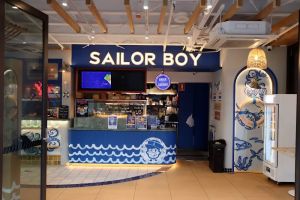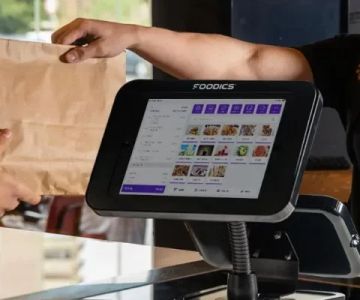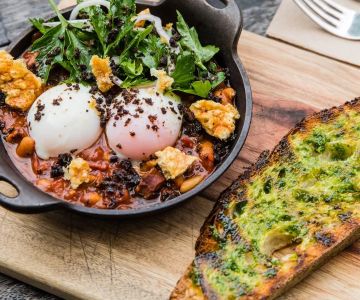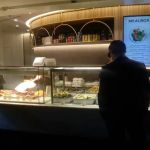
- 1. Understanding the Importance of Food Allergy Awareness
- 2. Challenges in the Australian Restaurant Industry
- 3. Steps Restaurants Are Taking to Address Food-Allergy Concerns
- 4. How Menu Design is Evolving to Address Allergies
- 5. Case Studies of Australian Restaurants Leading the Way
- 6. The Future of Food Allergy Awareness in the Australian Restaurant Scene
1. Understanding the Importance of Food Allergy Awareness
Food allergies have become a significant concern for many people in Australia, leading to heightened awareness within the restaurant industry. With the rise in food allergies like peanuts, dairy, gluten, and shellfish, it’s more important than ever for restaurants to ensure that they can cater to individuals with special dietary needs. This article will explore how restaurants in Australia are responding to these trends and why food-allergy awareness is crucial to customer safety and satisfaction.

Kagoshima Master Yakiniku Ultimo
UltimoCouncil of the City of SydneyNew South Wales
Retail, Shop A/517-521 Harris St, Ultimo NSW 2007, Australia
2. Challenges in the Australian Restaurant Industry
For restaurant owners and chefs, accommodating food allergies presents both challenges and opportunities. In a country like Australia, where dining out is a popular social activity, restaurants face the challenge of ensuring their food is both delicious and safe for all guests. Common challenges include:
- Cross-contamination between allergens and other food items
- Training staff to handle food allergies appropriately
- Ensuring menu options are clearly labeled with allergens
With more people becoming aware of the risks associated with food allergies, restaurants are under pressure to create safe dining environments without compromising the quality of their meals.
3. Steps Restaurants Are Taking to Address Food-Allergy Concerns
In response to these challenges, Australian restaurants are implementing several strategies to accommodate customers with food allergies. These include:
3.1 Staff Training
Proper training is essential to ensure that all staff members, from chefs to waitstaff, are well-versed in identifying allergens, avoiding cross-contamination, and understanding how to serve food safely to guests with allergies. Many restaurants now provide regular allergy awareness training to their teams.
3.2 Menu Transparency
Restaurants are increasingly offering allergen-friendly menus and clearly marking items that contain common allergens. This transparency helps diners make informed decisions and prevents accidental allergic reactions. Some restaurants even allow customers to customize their orders to avoid certain allergens.
3.3 Allergen-Free Kitchen Areas
Some restaurants have gone as far as creating designated allergen-free zones in their kitchens. This is particularly beneficial for guests with severe allergies, ensuring that their food is prepared separately from allergen-containing dishes.
4. How Menu Design is Evolving to Address Allergies
Menu design is one of the most obvious ways that restaurants in Australia are responding to food-allergy awareness. In the past, many restaurants offered only vague allergen information or didn’t account for allergens in their menu items at all. Today, menus are becoming more comprehensive and detailed to ensure customer safety. Some of the changes in menu design include:
4.1 Allergen Symbols
Restaurants are adopting easy-to-understand symbols next to dishes that indicate which allergens are present. This quick visual cue allows customers to make informed choices without needing to ask about every ingredient.
4.2 Special Allergen Menus
Many restaurants now offer special menus for customers with dietary restrictions. These menus often feature gluten-free, dairy-free, and nut-free options, making it easier for customers to find safe meal choices.
5. Case Studies of Australian Restaurants Leading the Way
Several Australian restaurants are leading the charge in food-allergy awareness and creating environments where guests can dine safely without fear of allergic reactions. Some notable examples include:
5.1 Restaurant A
Restaurant A has earned recognition for its comprehensive allergen-free menu, which includes carefully prepared gluten-free and dairy-free options. The restaurant also educates its staff on how to handle allergy-related inquiries and provides separate cooking areas for allergen-free dishes.
5.2 Restaurant B
Another standout is Restaurant B, known for its commitment to transparency. The restaurant lists all potential allergens for each dish on the menu and offers detailed ingredient lists for customizations. They even encourage guests with allergies to call ahead for personalized dining experiences.
6. The Future of Food Allergy Awareness in the Australian Restaurant Scene
As food-allergy awareness continues to grow, we can expect more restaurants in Australia to prioritize the safety of customers with allergies. The future will likely see:
- Increased adoption of digital menus that allow for allergen filtering
- Stronger regulations and guidelines for allergen labeling
- Expanded training programs for staff across the industry
By focusing on food-allergy awareness, Australian restaurants will not only protect their customers but also create a more inclusive and accessible dining culture for everyone.
If you’re interested in discovering allergen-friendly dining options, check out Sydney Eats Explorer for the best restaurants and eateries that cater to your dietary needs.








 Metropole Cafe4.0 (1020 reviews)
Metropole Cafe4.0 (1020 reviews) Hanaichi Sydney Central Plaza4.0 (12 reviews)
Hanaichi Sydney Central Plaza4.0 (12 reviews) Vogue Cafe Sydney4.0 (1880 reviews)
Vogue Cafe Sydney4.0 (1880 reviews) Esque4.0 (8 reviews)
Esque4.0 (8 reviews) Venchi - The Galeries Sydney4.0 (805 reviews)
Venchi - The Galeries Sydney4.0 (805 reviews) Gowings4.0 (1121 reviews)
Gowings4.0 (1121 reviews) Vegan-Friendly Restaurants in Melbourne That Even Meat-Eaters Love
Vegan-Friendly Restaurants in Melbourne That Even Meat-Eaters Love What Makes a Great Brunch Spot in Sydney? We Asked Locals | Sydney Eats Explorer
What Makes a Great Brunch Spot in Sydney? We Asked Locals | Sydney Eats Explorer How AI Is Personalising Dining in Australia - The Future of Restaurants
How AI Is Personalising Dining in Australia - The Future of Restaurants The Best Breakfast Spots in Australia for Food Lovers
The Best Breakfast Spots in Australia for Food Lovers How Restaurants Are Using Gamification in Dining Experiences in Australia
How Restaurants Are Using Gamification in Dining Experiences in Australia How Restaurants Are Using Sustainability Certifications to Attract Diners in Australia
How Restaurants Are Using Sustainability Certifications to Attract Diners in Australia